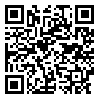BibTeX | RIS | EndNote | Medlars | ProCite | Reference Manager | RefWorks
Send citation to:
URL: http://jdm.tums.ac.ir/article-1-43-en.html
Background and Aims: Working length determination and remaining this length is of great importance in root canal therapy. Recently, electronic apex locators are being used to determine working length and decrease the number of radiographs. The purpose of this study was to compare the sensitivity of Root ZX and Novapex electronic apex locators with radiography in a clinical study.
Materials and Methods: In this study, 73 single-canalled teeth of the patients referred to the endodontic department of the Yazd Dental School were evaluated. The access cavity was prepared and working length of the root canals were measured by using the apex locators: Root ZX and Novapex. The file was placed in the root canal and a periapical radiograph was taken using parallel technique. The working lengths obtained by apex locators were recorded and compared with those of radiographs. The data were analyzed by Pearson's correlation coefficient, Wilcoxon test and paired t-test.
Results: The exact measurement without any fault was 46.6% for Root ZX and 20.5% for Novapex compared to radiography. In the range of 0.5 mm fault, the results were 91.8% for Root ZX and 64.4% for Novapex compared to radiographic measurements. The difference between the average of the measured lengths by Root ZX and radiography was not significant (P=0.17). On the other hand, the results showed significant difference between the average of the measured lengths by Novapex and radiography (P=0.017). The difference between two apex locators was not significant (P=0.061).
Conclusion: Root ZX and Novapex with high accuracy are useful for determining working length of the root canals in pregnant patients with special anatomic conditions and patients with muscle disharmony. Therefore, the use of these apex locators combined with radiography is recommended in root canal treatment.
Received: 2011/02/26 | Accepted: 2012/02/9 | Published: 2013/09/17
| Rights and Permissions | |
 |
This work is licensed under a Creative Commons Attribution-NonCommercial 4.0 International License. |




